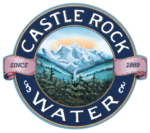The California drought has been a disaster in every aspect of the word. Water rationing, dry crops, water shaming, and brown lawns are standard fare in the Golden State.
Bottled water companies tend to take a lot of heat, some of them rightfully so, but for the most part the bottled water industry is a minuscule user of California’s water. Caste Rock Water, for example, uses about the same amount of water as five residential homes.
When we look at water distribution in California, we see where the solution truly lies. Just 20 percent of the water supply goes to residential and commercial uses, while 80 percent is devoted to agriculture. But here’s the shocker: of that 80 percent, 56 percent goes to raising animals for food.
California’s residents, especially the poorer ones, are doing all they can to save water but are being fined when the state deems they haven’t done enough. Many of the rich in California continue to use very high amounts of water, but that still pales in comparison to how much water animals are sucking down, just to be killed for their meat.
According to FoodTank,
The total amount of water needed to produce one pound of beef is 1,799 gallons. One pound of pork takes 576 gallons of water. As a comparison, the water footprint of soybeans is 216 gallons and corn is 108 gallons.
If people in California, and all over the world, ate just 10 percent less meat, we’d be well on our way to solving the water crisis. Raising animals for slaughter is one of the least efficient uses of water. If more people ate a plant-based diet there’d be more water to go around for everyone.
One of the most efficient uses of water is bottling it for human consumption. Many people keep cases of Castle Rock Water’s glass bottles on hand for drinking and cooking. They love it because it’s water from a sustainable source and reduces their intake of tap water. Plus, the living structured water tastes as water should while hydrating the body with a vitality that can only be found in water from the springs of Mt. Shasta.


Would all the cows and livestock use less water if they weren’t being slaughtered for food? If cows were not slaughtered for food, seems like there would be more of them, using greater quantities of water to grow all the hay and grass necessary to feed them all?
Fact is it’s growing plants like nuts and almonds that is putting a strain on the water supply in California–by farmers to fill a demand for plant-based food that was never meant to be grown out here in this kind of environment.
Jeff,
It means we would need to raise fewer animals for slaughter. We wouldn’t raise the same amount, just to keep them. Over time, the number of animals needed for food would decline and thus the need to keep them watered would decline. Animals are produced as a product and more are grown when needed. If there was less demand, fewer animals would be raised (and killed) for food. It’s proven that growing a pound of plants uses FAR less water than producing a pound of meat. Eating less meat is a real solution to the water problem.